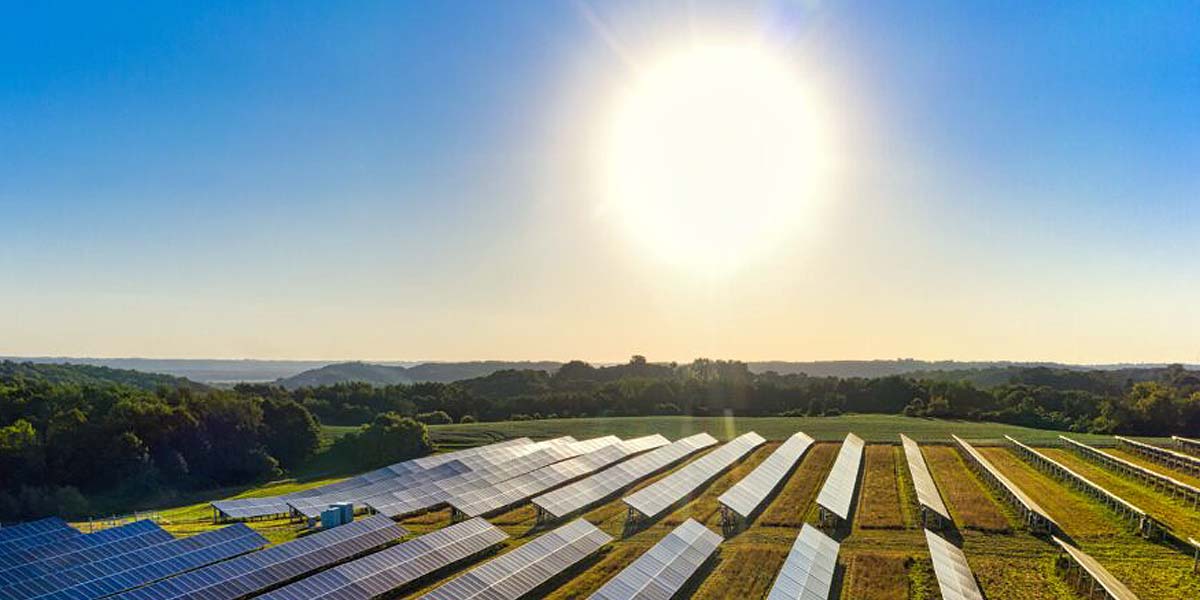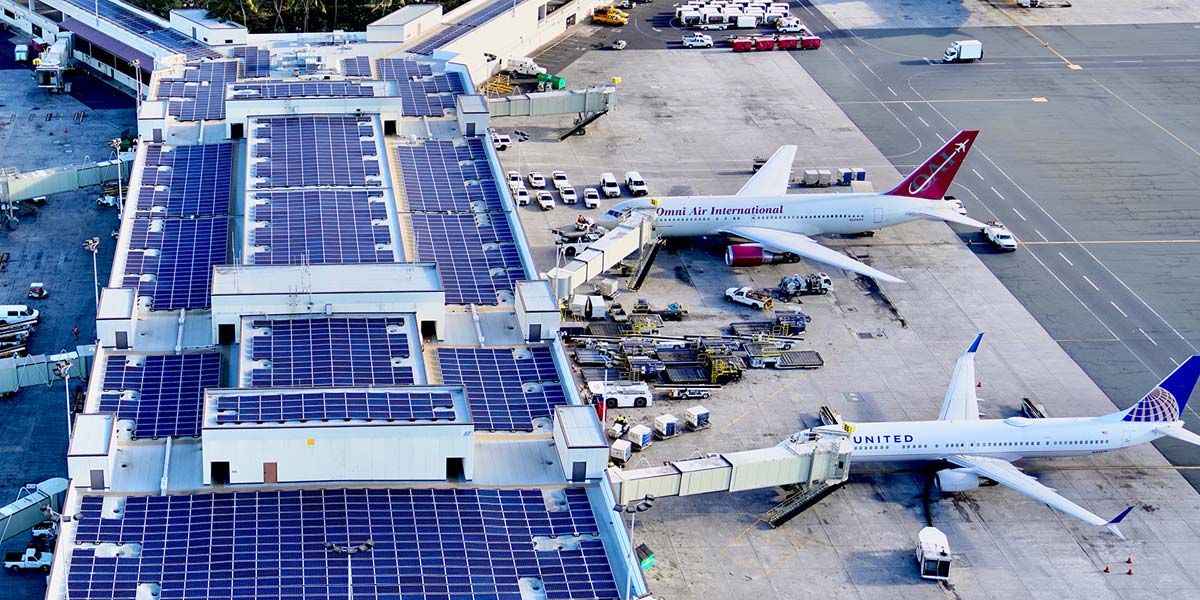Solar Panel Glare – Will it affect your neighbours?

You might not expect it, but solar panels can cause glare – even though they’re designed to absorb sunlight, rather than reflect it. Solar Panel glare can occur because panels are good at absorbing light perpendicularly to them but much less effective when the light is at a low angle. If you use cheap panels and non-certified installers, there is a chance your panels will create minor glare that can be an annoyance to residents and communities, especially when they are installed in large quantities on solar farms. Will your panels be a nuisance to your neighbours or will they be unnoticeable? In this blog, we’ll learn more about solar panels and their reflections.
How Do Solar Panels Work?
Solar panels are made up of photovoltaic (PV) cells, which convert sunlight into electricity. They’re usually made of silicon, which is a great material for absorbing sunlight – but that absorption comes with a side effect. When silicon absorbs sunlight, it also emits photons (light particles). And when those photons hit a reflective surface, they can cause glare.
Why Do Solar Panels Cause Glare?
It’s important to understand that not all PV cells are created equal. Some types of PV cells, like monocrystalline silicon cells, are better at absorbing sunlight than others. That’s why monocrystalline silicon cells are often used in high-end solar panels. But even the best PV cells are only about 80% efficient at absorbing sunlight; the rest is reflected back out as photons.
Most of those photons are emitted perpendicular to the surface of the cell, so they don’t cause much glare. However, some of them are emitted at low angles, where they’re more likely to hit a reflective surface and create glare. That’s why solar panels can cause significant glare even though they’re designed to absorb sunlight.
Reflectivity and Solar Panel Glare
There’s no doubt that solar panels reflect some light. The question is, how much sunlight? Keep in mind that solar panels convert light into electricity, so they’ll perform best if they absorb as much of it as possible and don’t reflect it. To that end, to improve their efficiency, they’re coated with anti-reflective paint.
The reflectivity of a solar panel is the percentage of light that is reflected back from the surface. The higher the reflectivity, the more likely it is to cause glare. The National Renewable Energy Laboratory in the USA performs various studies and demonstrated that “PV modules exhibit less glare than windows and water.” Mirrors and even snow have a higher reflectivity than solar panels. Whilst the reflectivity can sometimes be an attractant to birds, it is mostly unnoticeable to others.
What is the difference between glint and glare?
Glint is a momentary, bright reflection of sunlight from a smooth, shiny surface. If you drive by a solar panel quickly, you might see a sparkle of glint. Glint effects can be seen from things that reflect light, like glass or building facades.
Glare is a more sustained and disabling condition caused by reflections that are too bright or too large in the field of vision, or both. These definitions are based on advice from the Federal Aviation Authority (FAA) in the United States of America who have performed glint and glare assessments to understand the solar glare that can occur from solar PV panels.
An assessment or study to detect any light-sensitive receptors for solar (photovoltaic) installations and structures with reflective surfaces may be conducted using a Glint and Glare Assessment or Study.
How Can I Reduce Solar Panel Glare?
If you’re worried about solar panel glare, there are a few things you can do to reduce it. First, make sure your solar panel installer uses high-quality PV cells. Monocrystalline silicon cells are the best option for reducing reflection and glare.
You can also ask your installer to use black frames around your PV cells. These frames will help absorb any photons that manage to escape from your cells, preventing them from hitting a reflective surface and causing glare. Finally, you can install your solar panels on adjustable mounts that allow you to angle them away from areas where people regularly gather (like patios or sidewalks). By angling your panels away from these areas, you’ll minimize the amount of reflected light that reaches them.
Light angle
Light angle is important for two reasons when it comes to glare from solar panels. First, the lower the angle of the sun, the more likely it is that photons will hit a reflective surface and cause glare. Second, the lower the angle of the sun, the more direct sunlight your panels will receive. So if you live in an area with a lot of direct sunlight, you may want to angle your panels away from areas where people gather to reduce the amount of reflected light.

Airport regulations
Airport regulations are a common reason why solar farms have to take steps to reduce glare. Overseas, the U.S. Federal Aviation Administration (FAA) has regulations in place to prevent aircraft from being blinded by reflections from solar panels. These regulations require that solar farms be located at least five miles from an airport and that they use special low-glare PV cells.
When considering solar glare when assessing the suitability of a solar installation near an airport in Australia, CASA usually follows the advice provided by the Federal Aviation Administration (FAA). Solar panels are designed to absorb light mostly, with only a small amount of reflection. The FAA recommends a glare analysis of any solar farm along the runway alignment and within 2nm of the runway end.
The assessment of solar farms is not covered by any civil aviation laws or standards. Only CASA advises the relevant parties, and the local planning authority makes the ultimate decision.
Conclusion
Solar panel glare can be a nuisance – but it doesn’t have to be. By choosing high-quality PV cells and installing them on adjustable mounts, you can minimize reflection and ensure that your solar panels aren’t creating a nuisance for your neighbours or community members. If you are performing a solar panel installation at your home or business and have questions about which pv solar panels are specifically designed to maximise incoming light and minimise light reflected, give the friendly staff at Skyline Solar a call today.

